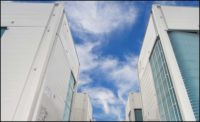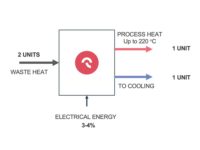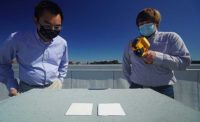There’s been a push to increase outdoor air since the pandemic, but the recent Canadian wildfires show the health benefits of doing so are more complicated. There are several steps engineers can take to keep out pollutants and other airborne hazards.
The smoke from wildfires consists of small particulates that can flow over a large area. In the case of June’s largest wildfires, smoke moved from central Canada all the way to the East Coast. This caused the worst day of air quality on record in New York City.
"With many health officials urging individuals to stay indoors during air quality alerts, it is more important than ever to protect indoor environments," said Justin Keppy, president of North America residential & light commercial HVAC at Carrier.
The main focus for IAQ in the past few years deals with threats already in a building, such as the coronavirus. Increasing the amount of outside air has been viewed as one of the best ways to combat these threats. But there are times, such as in early June, when the outside air became the threat.
“Optimizing IAQ for occupant health is clearly essential during these episodically challenging events,” wrote Stephanie Taylor, president and founder of Building4Health Inc., in a recent column in this magazine.
Taylor went on to write that energy-efficient optimization of IAQ for health during times when outdoor pollutants are high from routine traffic or industrial emissions needs to be better studied. She said the first step should be to measure both IAQ and outdoor air conditions by using both indoor and outdoor air quality sensors.
A good indoor air quality sensor will measure the following parameters: temperature, relative humidity, carbon dioxide particulate matter, and total volatile organic compounds, said Jon Douglas, director of Johnson Controls’ healthy building services and solutions.
Douglas said it’s also important to upgrade filters to keep out particulates during conditions such as those brought on by wildfires. Many buildings use low-efficiency filters on that outside air, said These filters are typically MERV 4 to MERV 5.
“We would encourage building operators to run a MERV 13 filter on their outside air, especially in times of wildfires,” Douglas said.
Keppy said these filters will need to be changed more often than normal, regardless of the MERV rating.
“Over the next few days or weeks, air filters will be capturing smoke-related airborne particles that impact your indoor air quality,” he said. “A buildup of these particulates on a filter can impact your system's efficiency and reliability.”
The main focus of HVAC systems has always been comfort, Douglas
said. People knew if they were hot or cold, but didn’t know or usually care about the quality of the air they breathed. That’s starting to change due to the pandemic
“COVID taught us the importance of managing indoor air quality in buildings,” Douglas said. “What we learned during COVID is that the COVID virus spreads through respiratory droplets. These droplets float through the air just like particles and enter your lungs and cause infection.
“One of the key tools for managing the COVID pandemic is filtration. And it turns out these same tools are good for managing the risk due to forest fires.”





